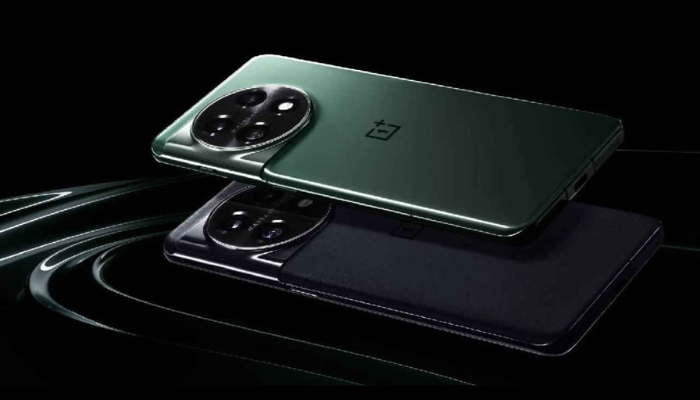Despite its slick screen, top-tier chip, and long battery life, the OnePlus 12 disappoints with its lack of advanced AI capabilities and short support life
OnePlus’s latest flagship phone seems to lag behind its competitors. Despite its sleek design, fast software, and extended battery life, the OnePlus 12 lacks the advanced AI features found in smartphones from Samsung, Google, and other brands. It gives the impression of belonging to the 2020 era rather than the current era of artificial intelligence.
This might appeal to users seeking a streamlined, less cluttered experience, as might its price of £849 (€969/$799), which is lower than £1,000 rivals offering more features. However, it falls short of modern standards.
The design closely resembles last year’s OnePlus 11 (which debuted £120 cheaper): a sleek metal and glass construction that feels as smooth as it appears. The massive 6.82-inch OLED display is incredibly sharp, fluid, and exceptionally bright. A prominent design feature is the large circular camera bump on the back, along with the beloved alert slider on the side.
Under the hood, the OnePlus boasts Qualcomm’s latest flagship Snapdragon 8 Gen 3 chip, offering a 30% speed boost and 20% better power efficiency compared to its predecessors. This chip is incredibly potent and is only found in a few new smartphones.
The OnePlus delivers a fast and seamless experience in everyday use. However, to unlock its maximum performance and run it at full capacity, you must activate the “high performance” mode, which is tucked away in the settings, or use the gaming mode. The phone is optimized for power efficiency rather than raw performance, resulting in an exceptionally long battery life.
The OnePlus lasts a reliable 52 to 55 hours on a single charge, offering over nine hours of active screen use with default settings. This battery life is notably longer than that of last year’s model and rivals the best in the industry. Additionally, the OnePlus charges exceptionally fast, reaching 100% in under 30 minutes with the included 100W charger.
Specifications
Screen: 6.82-inch 120Hz QHD+ OLED (510ppi)
Processor: Qualcomm Snapdragon 8 Gen 3
RAM: 12GB or 16GB
Storage: 256GB or 512GB
Operating System: OxygenOS 14 (Android 14)
Camera: 50MP + 48MP ultrawide + 64MP 3x telephoto; 32MP front camera
Connectivity: 5G, eSIM, Wi-Fi 7, NFC, Bluetooth 5.4, GNSS
Water Resistance: IP65 (spray resistant)
Dimensions: 164.3 x 75.8 x 9.2mm
Weight: 220g
Sustainability
The battery is designed to retain at least 80% of its original capacity for 1,600 full charge cycles.
While the phone doesn’t incorporate significant amounts of recycled materials, OnePlus offers repair services, with screen replacements priced at £174 and batteries at £21, plus approximately £50 for labor. The company is part of the Eco Rating scheme, which assesses environmental impact, and is featured in Oppo’s annual sustainability reports.
OxygenOS 14
The phone operates on OxygenOS 14, a customized version of the latest Android 14 software. It offers a sleek interface with ample customization options, including gestures, visual themes, and various multitasking features. However, it lacks the AI tools and intelligent systems that are prevalent in both Android and iPhone devices.
There are no advanced photo editing features, AI-generated wallpapers, summarization or transcription tools, or even Google’s Circle to Search feature. While not all AI tools found in rival devices are universally praised, many have become valuable additions that users expect in a high-end phone.
Another notable drawback is the limited software support. OnePlus offers only four years of Android updates and five years of security patches, which falls short of the standards set by Apple, Google, and Samsung, not to mention Fairphone’s 10-year support. Given its affiliation with smartphone giant Oppo, OnePlus has the capacity to provide more comprehensive support and should strive to do so.
Camera
The OnePlus 12 features a slightly improved camera compared to its predecessor. It includes a 50-megapixel main camera on the back, capable of capturing appealing images across a reasonably broad range of lighting conditions, although it shows some inconsistency in dim or night settings. The 64-megapixel 3x telephoto camera is also reliable and offers an in-sensor zoom, achieving up to 6x magnification with additional digital zoom. While the 6x zoom performs well in good lighting, it quickly loses quality in less illuminated conditions. The ultrawide camera exhibits similar behavior.
Overall, the camera system is dependable, but it struggles more than its competitors indoors, in low light, or in high-contrast scenarios. OnePlus still has ground to cover to match the camera performance of Google, Samsung, or Apple.
Price
The OnePlus 12 is priced starting at £849 (€969/$799).
In comparison, the Google Pixel 8 Pro is priced at £999, the Samsung Galaxy S24+ at £999, and the iPhone 15 Plus at £899.
Verdict
The OnePlus 12 is a reliable phone, but it finds itself in an awkward position. While it boasts strong performance, it lacks the features to compete with its high-end counterparts. Its absence of AI tools feels outdated, making it somewhat unexciting. Moreover, its limited software support falls well below the standards set by Google, Samsung, and Apple, leading to a deduction in rating.
Simultaneously, its price point is too high to be considered a mid-range phone, which typically ranges from £350 to £650. This puts OnePlus in a challenging position, as it offers top performance but ultimately falls short compared to its competitors.
